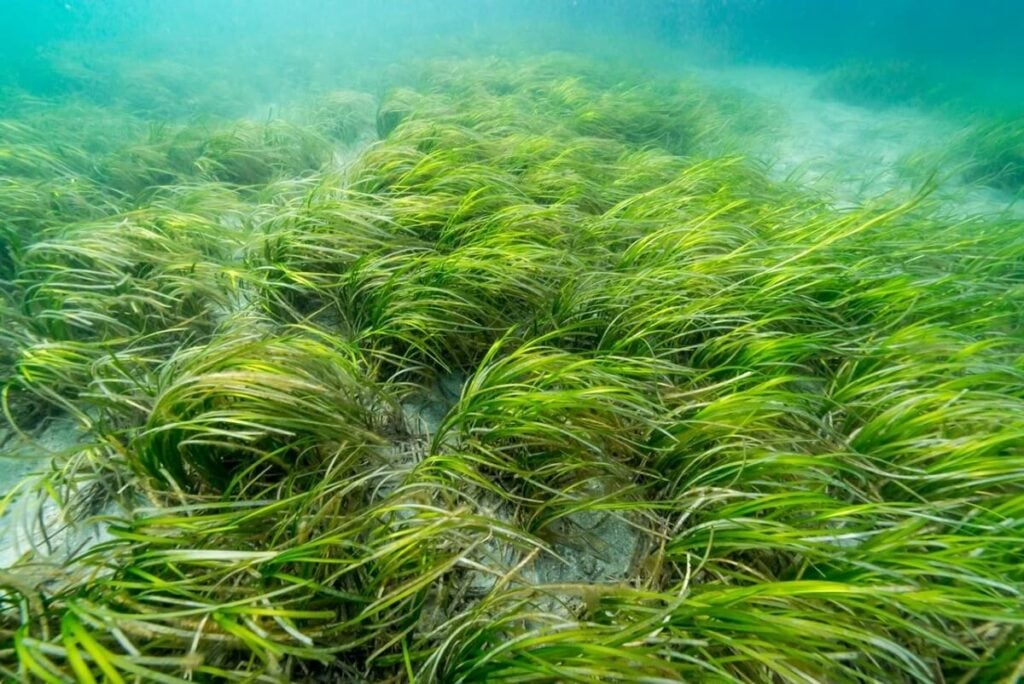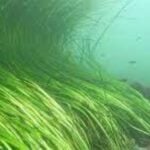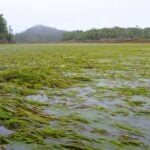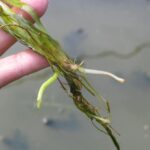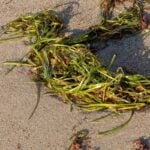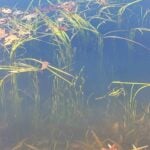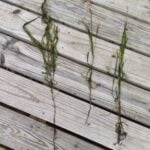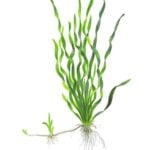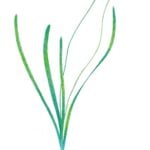Eelgrass (Vallisneria)
Other Common Names: tapegrass, wild celery
(Vallisneria americana)
Native
Eelgrass has long ribbon like leaves with very distinctive veins like that of celery.
Description
Eelgrass is a submerged plant that has horizontal creeping rhizomes. Leaves are grouped at the base, growing directly from the root.
The leaves are straight and thin, ribbon like, about three-fourths of an inch wide and can grow to four feet in length. Eelgrass leaves have serrated edges, an obvious stripe in the middle, and a consistency like cellophane.
Sometimes eelgrass can be confused for an arrowhead plant, but the center stripe on the leaves sets it apart.
Tiny white flowers sometimes float on the water.
This plant oftentimes forms underwater meadows. It grows in lakes or flowing streams with firm bottoms. It can grow in shallow water or water up to seven feet deep.
Eelgrass is a major food source for canvasback ducks; they even change their migration patterns to be near eelgrass beds. Other waterfowl eat this plant as well; the leaves, rhizomes, tubers, and fruit are all consumed. Ducks that eat a lot of eelgrass can have a celery like flavor, which is the reason for the name wild celery.
Management Options
Location
Eelgrass can be found across most of the United States.
Propagation
rhizomes, fragments

